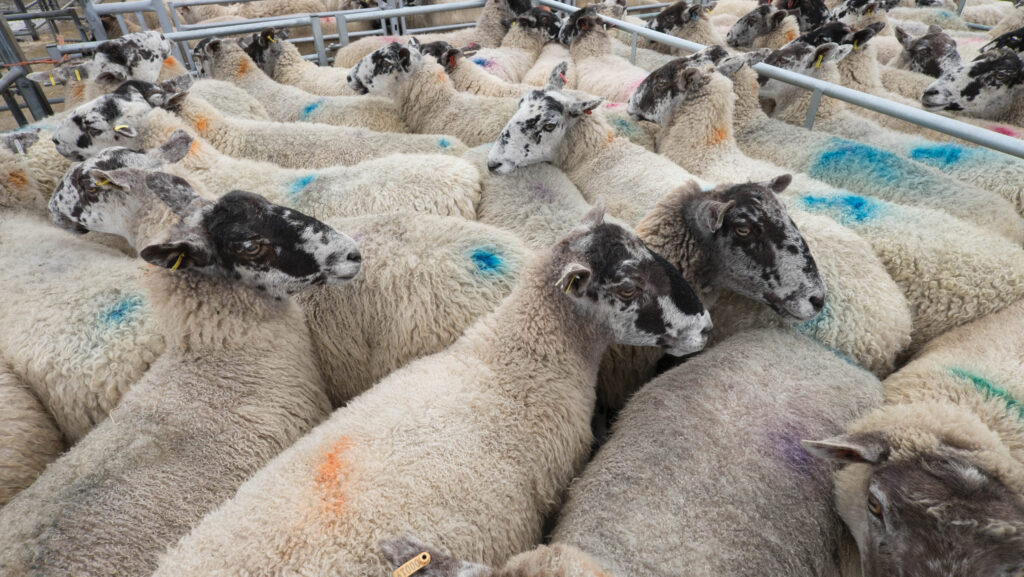Cull ewes in demand as buyers compete to secure stock
 © Tim Scrivener
© Tim Scrivener The cull ewe trade has been resilient throughout 2025, with prices remaining strong even after reaching their peak in the spring.
Cull ewes averaged £137 a head at auction marts in England and Wales in the past week, up nearly £30 on the same week last year.
Surging demand from the food service sector and the halal market in the build up to key religious festivals, such as Qurbani, has provided a crucial uplift to farmgate prices in recent months.
See also: Global food output set to surge by 2034 as prices decline
Trade often drops off slightly during the summer months, however tight supplies have kept prices reasonably firm.
Sheep slaughter figures totalled just 530,000 during the first five months of the year, according to Defra figures.
More recently, supplies have stayed tight, with throughputs falling by 12% at auction markets in England and Wales during early July.
Cull ewes averaged £142 a head at South Molton Livestock Market in Devon on 10 July, with top prices bordering on the £200 mark.
Stags auctioneer Chris Clapham said South Molton had seen stronger numbers just before the festival, but lately numbers had been quite hard to find.
He added: “The trade bounced straight back up after the festival and prices are getting stronger every week again.”
An entry of 81 ewes averaged £141 a head at Thirsk Farmers Auction Mart in Yorkshire last week.
Ben Wilson, sheep auctioneer at Thirsk, said: “We have had a good trade for ewes, the averages just eased off a little bit after the festivals between April and June, but overall we have kept a good trade, with prices a long way up on the year.
“Nationally, there are fewer numbers about, a lot of ewes were killed at the beginning of the year through the festival. I think it’s the shortage which is keeping the price where it is really.”
A combination of limited fodder on farm and ewes coming forward having had lambs weaned straight off them has led to more leaner ewes being sold at auction markets.
AHDB livestock analyst Grace Bolton explained that one of the main drivers for the strength in cull ewe prices had been lower throughput so far in 2025.
She said: “Numbers appeared to peak in early July ahead of the Qurbani festival, but were still substantially lower year-on-year.
Ms Bolton added that supply tightness was to be anticipated as sheep numbers had contracted, with the Defra December census showing the UK breeding ewe population down by 5% on the year at 13.1m head.
